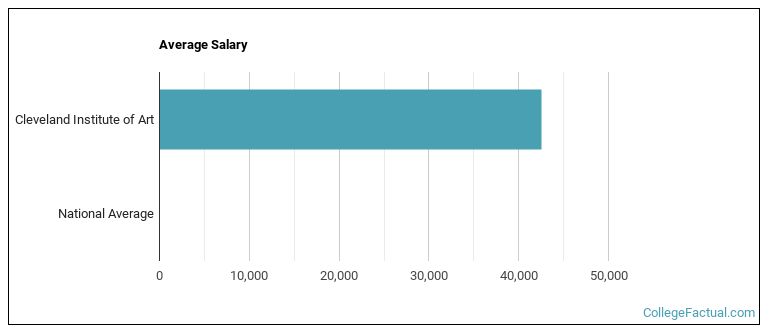 by our College Data Analytics Team
by our College Data Analytics TeamCollege Factual recognizes the best colleges and universities in its annual rankings. These rankings include categories for best overall colleges, best colleges for each major, best value schools, and much more.
Cleveland Institute of Art was awarded 2 badges in the 2025 rankings. The highest ranked major at the school is fine & studio arts.
Explore the best ranked schools for the programs you are most interested in.
CIA was not ranked in College Factual's Best Overall Colleges report this year. This may be because not enough data was available.
Cleveland Institute of Art has an acceptance rate of 70%, which means the school is serious about who it admits. Take your time in putting together a strong application that highlights why you are a good fit for CIA.
About 14% of students accepted to CIA submitted their SAT scores. When looking at the 25th through the 75th percentile, SAT Evidence-Based Reading and Writing scores ranged between 570 and 660. Math scores were between 510 and 620.
The student to faculty ratio is often used to measure the number of teaching resources that a college or university offers its students. The national average for this metric is 15 to 1, but at CIA it is much better at 8 to 1. That's good news for students who want to interact more on a personal level with their teachers.
In addition to the student to faculty ratio, some people look at what percentage of faculty members are full-time as a sign of how much time professors will be able to spend with their students. This is because part-time teachers may not be be on campus as much as their full-time counterparts.
The full-time faculty percentage at Cleveland Institute of Art is 41%. This is lower than the national average of 47%.
Cleveland Institute of Art has a freshmen retention rate of 80%. That's a good sign that full-time students like the school and their professors enough to want to stick around for another year. It's also a sign that the admissions team did a good job in choosing applicants who were a good fit for the school.
The on-time graduation rate for someone pursuing a bachelor's degree is typically four years. This rate at CIA for first-time, full-time students is 56%, which is better than the national average of 33.3%.
Find out more about the retention and graduation rates at Cleveland Institute of Art.
During the 2017-2018 academic year, there were 599 undergraduates at CIA with 590 being full-time and 9 being part-time.
| $0-30 K | $30K-48K | $48-75 | $75-110K | $110K + |
|---|---|---|---|---|
| $27,187 | $28,494 | $32,196 | $33,387 | $38,592 |
The net price is calculated by adding tuition, room, board and other costs and subtracting financial aid.Note that the net price is typically less than the published for a school. For more information on the sticker price of CIA, see our tuition and fees and room and board pages.
Almost 66% of college students who graduated with the class of 2018 took out student loans, but that percentage varies from school to school. At CIA, approximately 79% of students took out student loans averaging $10,405 a year. That adds up to $41,620 over four years for those students.
Get more details about paying for Cleveland Institute of Art.

See which majors at Cleveland Institute of Art make the most money.
Get more details about the location of Cleveland Institute of Art.

Contact details for CIA are given below.
| Contact Details | |
|---|---|
| Address: | 11610 Euclid Avenue, Cleveland, OH 44106-1710 |
| Phone: | 216-421-7000 |
| Website: | www.cia.edu/ |
| Most Popular Majors | Bachelor’s Degrees | Average Salary of Graduates |
|---|---|---|
| Design & Applied Arts | 65 | $23,358 |
| Fine & Studio Arts | 25 | $18,839 |
| Graphic Communications | 16 | $19,409 |
| Film, Video & Photographic Arts | 11 | NA |
| Medical Illustration & Informatics | 8 | NA |
Online learning options are becoming more and more popular at American colleges and universities. Online classes are great for students who have busy schedules or for those who just want to study on their own time.
In 2022-2023, 81 students took at least one online class at Cleveland Institute of Art. This is an increase from the 54 students who took online classes the previous year.
| Year | Took at Least One Online Class | Took All Classes Online |
|---|---|---|
| 2022-2023 | 81 | 0 |
| 2021-2022 | 54 | 0 |
| 2020-2021 | 531 | 0 |
| 2018-2019 | 40 | 0 |
Learn more about online learning at Cleveland Institute of Art.
Footnotes
*The racial-ethnic minorities count is calculated by taking the total number of students and subtracting white students, international students, and students whose race/ethnicity was unknown. This number is then divided by the total number of students at the school to obtain the racial-ethnic minorities percentage.
References
More about our data sources and methodologies.